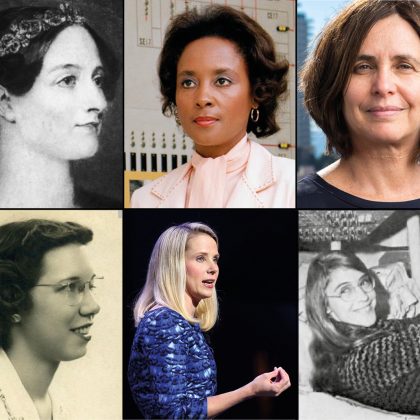Conversations with Authors: Group Specific Measures and Novel Designs to Mitigate Gender-Based Violence in India
Once again, a brutal rape case that occurred in India in September 2020 has captured headlines and stunned the world. In Hathra, Uttar Pradesh, a Dalit (an oppressed caste), woman was gang-raped by several dominant caste men; she succumbed to her injuries two weeks after the attack. The gruesome episode raises the question as to what steps the Indian government has taken to mitigate such violence, especially after a similarly highly publicized murder in New Delhi in 2012.
In a recent article published in the American Political Science Review, Nirvikar Jassal examines a novel institutional design that a number of state governments in India introduced to mitigate gender-based violence: the implementation of all-women police stations, run by female police officers to accommodate the female victims of crime. Rooted in assumptions about citizens preferring in-group administrators, or the ability for group-specific institutions to create spaces removed from bias, India has rolled out the largest number of all-women police stations anywhere in the world.
Jassal argues that while such group-specific measures may attempt to empower, they in fact adversely impact female administrators in the police bureaucracy as well as victims of sexual assault. The core of his argument is that group-specific institutions—settings where administrators are physically or occupationally segregated based on identity—create incentives for administrators in other bodies to deflect responsibility. In other words, the creation of an all-women police station—in contexts where gender-based violence is not seen to be on the same par as other crimes—may allow male police officers at standard police stations to forward complainants to other institutions when victims approach them for help. Gender-based “enclaves,” he says, may create a system of multiple jurisdictions that end up narrowing rather than enlarging access points for services. Jassal’s findings are a sobering reminder about how well-intentioned policies can, potentially, generate unintended consequences.
Jassal was recently interviewed by Professor Alison Post, a professor of Political Science at the University of California, Berkeley about his article.
Alison Post (AP): You find that the implementation of group-specific enclaves may enable non-enclaves to deflect responsibility. But why don’t enclaves at least empower the administrators who serve in group-specific institutions?
Nirvikar Jassal (NJ): Yes, this may seem counterintuitive. Presumably, if women police officers—who may be otherwise marginalized within the bureaucracy—are placed in charge of their own police stations, their capacity and responsibilities should increase. However, because group-specific institutions associate administrators with specific roles, they become less likely to carry out diverse responsibilities. In other words, at a standard police station, women police officers may be assigned murder or kidnapping cases; but, when posted at all-women police stations, female administrators may be typecast with “gendered crimes,” such as sexual harassment. Indeed, all-women police stations were designed with the explicit goal of assigning female administrators gendered tasks based on an assumption that women are better suited to look after the interests of other women. While I am not able to make a claim about policewomen’s long-term career prospects, I do show group-specific institutions may not be empowering if female officers are assigned fewer cases when posted in enclaves.
AP: I have seen research to suggest that all-women police stations in Latin America do not necessarily have the same effects that you describe in India. Why do you think that might be?
NJ: There is significant heterogeneity as to how all-women police stations are designed and implemented, as well as their jurisdictions. Other studies have focused on outcomes such as the effects of such bodies on citizen perceptions of safety. Instead, I look more specifically at organizational changes within the police bureaucracy or in terms of facilitating case registration and impacting arrest rates. Still, looking at my study in tandem with others, it seems that the efficacy of such bodies may be heightened when there is bottom-up mobilization. The Brazilian institutions were first developed in Sao Paolo by a reform-minded mayor in the mid-1980s after pressure from women’s groups; yet, in India, the implementation was significantly more top-down.
Nevertheless, the dynamics that I describe are likely to apply broadly. For instance, scholars that have done ethnographic work inside all-women stations in Brazil find mixed results; they describe some of the same potentially adverse implications about, for instance, female officers being marginalized from “mainstream” police work or typecast with specific assignments. I hope that subsequent scholarship focuses on heterogenous effects not only across continents, but even sub-nationally. The Indian state of Tamil Nadu, for instance, has not only housed all-women police stations for almost thirty years, but it also has by far the largest number of such institutions in the subcontinent. Sexual assault may be perceived quite differently by the criminal justice system in south India compared to the Hindi-speaking heartland of the north.
AP: But are you going so far as to say that all-women police stations should be abolished?
NJ: No, not exactly. It is a bit more complicated. I hope to put forward a more nuanced argument which is that institutional design matters, and it really depends on the outcome one is interested in. In my qualitative research, which I flesh out in another article, I show that all-women police stations seem to be particularly effective in allowing women complainants to speak freely about the hardship that they face or the assault that they endured. This finding gels with social science literature about gender-based enclaves and deliberation, i.e. the idea that marginalized groups feel more comfortable articulating their concerns in homogenous spaces. And so, if one’s goal is to simply enable groups to speak freely, then all-women stations may indeed serve their purpose. But, if the goal is to facilitate access to justice or increase arrest rates and so on, I find that in their current design, all-women stations may not be a panacea. And so, saying group-specific institutions are effective or not effective is in some ways facile: It really depends on what you (as a policymaker) want to achieve.
AP: What do you think are some of the important take-aways from this article?
NJ: Well, I hope the article conveys several ideas that scholars and policymakers might consider. First, as I mentioned, representation policies can be designed in any number of ways. Second, while scholarship (including some of my own forthcoming work) shows that the presence of women in leadership matters, I suggest that what is also crucial is women’s association with non-gender normative leadership, such that female administrators are not relegated to stereotypically gendered tasks alone. Third, I try to show that well-intentioned policies can have unintended consequences without any individual or bureaucrat necessarily acting with malign intent. In other words, male police officers may deflect cases at all-women police stations not necessarily as a consequence of “shirking” but because they may sincerely believe that group-specific institutions will have sufficient time to deal with women’s cases. Similarly, female police officers may caution victims against registering formal cases because—as officials that received the same training as policemen—they may genuinely believe that reconciliation of victims of assault with abusers may protect a complainant from destitution or additional violence by family or the community. And so, in settings of weak state capacity or certain norms about gender violence being a “family matter,” police officers and bureaucrats may simply be trying to do their best given the circumstances in which they operate. It is these circumstances that I argue have to be taken into account when designing policy.
NJ: Nirvikar Jassal, Ph.D., is a post-doctoral fellow at Stanford University’s King Center on Global Development. His work focuses on gender, sexual violence, ethnic conflict, and hate crimes in a comparative perspective.
AP: Alison Post, Ph.D., is a Professor of Political Science at the University of California, Berkeley. Her research focuses on urban politics and comparative political economy, with a special focus on regulation and business-government relations. Her work has been published in Comparative Politics, Annual Review of Political Science, and World Development, among others.






